Review and images by Alopias superciliosus; edited by bmathison1972
The Greenland Shark (Somniosus microcephalus) is the largest of the Sleeper Sharks (family Somniosidae), and one of the largest extant species of sharks, attaining lengths of up to 23 ft (7 m) and weighing up to 3,090 lbs (1,400 kg).
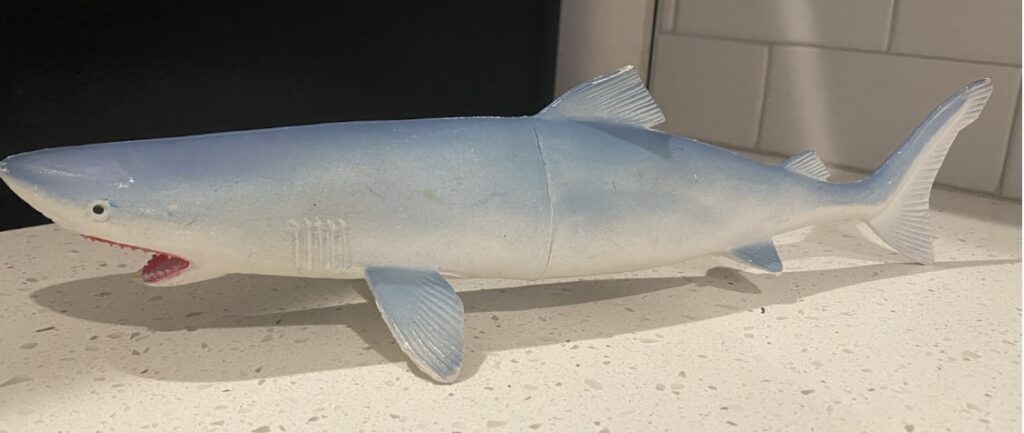
As the common name suggests, Greenland Sharks inhabit the waters around Greenland, but extend throughout most of the North Atlantic and North Sea, and interestingly may have a greater distribution throughout the Atlantic, being observed as far south as Belize. Greenland Sharks typically stick to very deep water, typically in the bathypelagic (“Midnight Zone”), being cold water specialists.
Greenland Sharks are ectothermic and live in a near freezing environment. In order to survive in such frigid conditions without internal thermal regulation, the Greenland Shark’s strategy is to use as little energy as possible. The shark has an extremely slow metabolism, correlated with its extremely slow swim speed; its typical cruising speed is only between 0.76 and 1.6 mph (1.22-2.6 km/h), the slowest swim speed per size of any fish species. As such, the shark is mostly an opportunistic scavenger and not an active predator, as any of its prey could outpace it with ease. Cod, flounder, wolffish, skates, other sharks, seals, moose, and reindeer remains have all been found within the stomachs of Greenland Sharks. Perplexingly, whole seals have been found swallowed by these sharks, suggesting the shark caught the seal instead of simply scavenging it, even though a seal could effortlessly escape from such a sluggish animal; the suggestion is that Greenland Sharks ambush seals while they sleep, slowly approaching undetected and then rapidly drawing in the animal by opening their buccal cavity creating suction.

The Greenland Shark has a potentially mutualistic relationship with the copepod Ommatokoita elongata. The copepod often attaches itself to the shark’s eyes and slowly feeds from it, leaving the shark blind. The presence of the copepod does not seem to reduce life expectancy or predatory success for the shark, as the animal already primarily relies on its sense of smell and hearing over vision and lives almost exclusively in pitch black water. The copepod may even assist the Greenland Shark in catching prey, as it is bioluminescent and may draw in animals towards the shark.
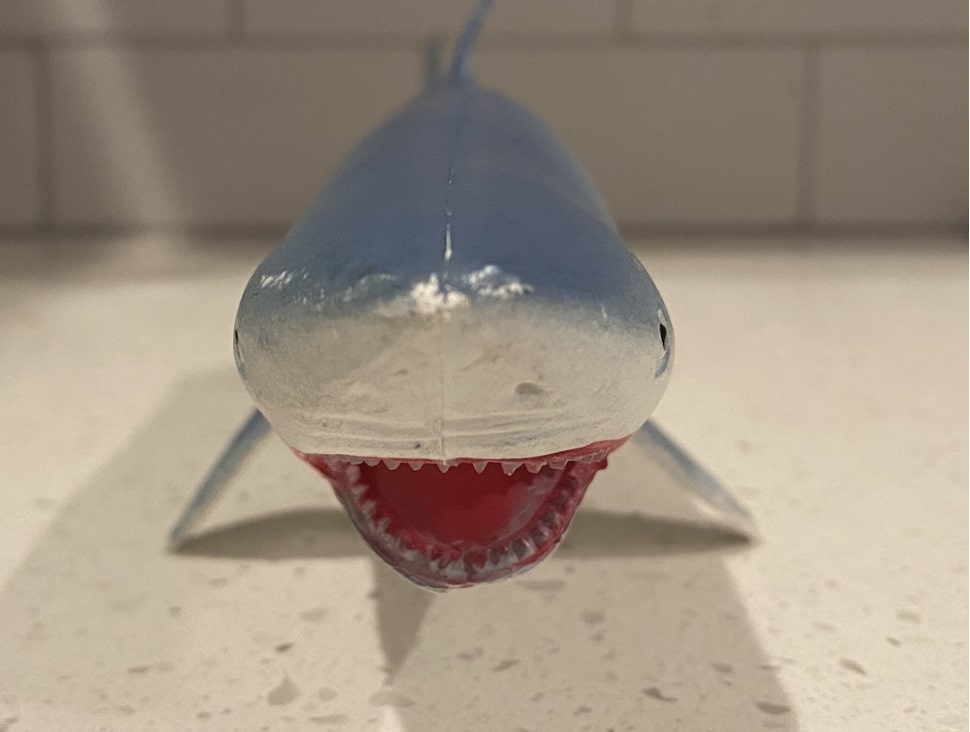
The Greenland Shark has the longest lifespan of any vertebrate species, likely due to its extremely slow metabolism and low effort, opportunistic feeding strategy. A 2016 study using radiocarbon dating found the largest shark caught for the study, which measured 16.5 ft, was anywhere between 272 and 512 years old. Given the largest recorded Greenland Shark measured 23 ft, and Greenland Sharks display continuous growth, it is likely members of the species can attain well over 500 years old. It is unknown how long a Greenland Shark can live before succumbing to natural causes, but it is undoubtedly a staggeringly high number compared to all other vertebrates.
With such a long life span, sexual maturity only occurs after 150 years, and gestation lasts 8-18 years, making the shark extremely susceptible to overfishing.

For as fascinating and unique of a species as the Greenland Shark is, it is surprising that none of the major figure companies have taken on this species, or any other type of sleeper shark. The figure here is from Larami, a now long defunct company that made a variety of toys from the 1960s into the 1990s, including figures for the Adam West Batman TV show, Planet of the Apes, and Star Wars, as well as producing a range of water guns called “Super Soakers”, the name and base design of which continue to be used today by Hasbro after the company acquired Larami in 1995.
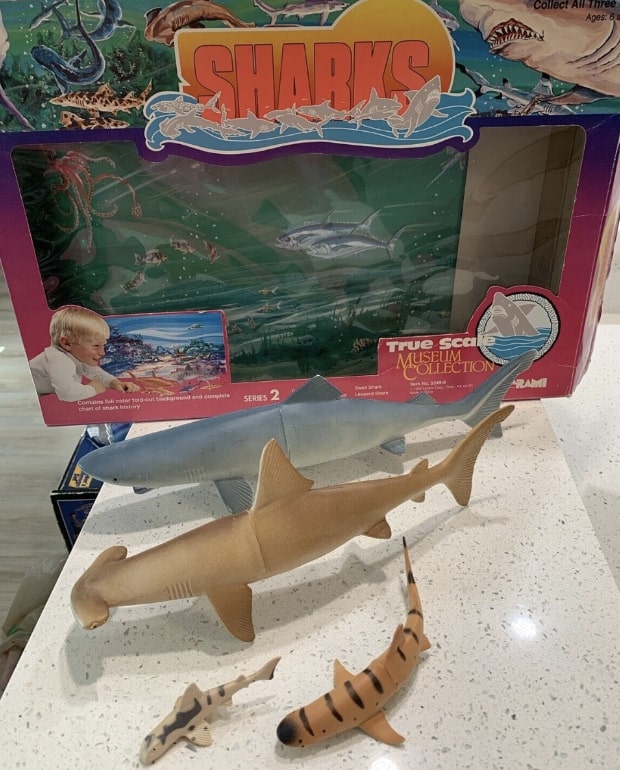
Near the end of the company’s life in 1992, Larami branched out from movie merchandise and water guns to produce sea animal figures, specifically sets of sharks and sets of cetaceans. The sharks were touted as being a “Museum Collection”- I could not pinpoint if there was an actual museum collaboration behind this set, or the museum reference was just to allude to the “accuracy” of the sharks portrayed. Twelve shark figures were released across three different “series”, each series being a box set complete with a poster. The Greenland Shark was released in the Series 2 box alongside the Scalloped Hammerhead, Leopard Shark, and Swell Shark. Interestingly, the background provided for this box is tailor-made for the Greenland Shark, who is the largest in the Series 2 set, featuring an icy ecosystem that none of the other three sharks in the set would be equipped for. Confusingly, however, penguins are depicted, even though the Greenland Shark is an Arctic species, not Antarctic.

The Larami sharks are certainly of a lower quality of plastic and design than contemporary shark models from companies like Safari and Papo, but still hold up decently well. The sharks are made of a firm PVC, so while the figure is hollow, it still has give and retains its shape. The most unsightly aspects of these figures are the large medial seams and the fluorescent open mouths. Reuse of sculpts is common among the Larami sharks; across the 12 figures, there are only 6 unique sculpts. The Greenland Shark luckily received its own unique sculpt, which makes the inaccuracies we will cover all the more strange.

First, the positives. The model does a great job at capturing the overall body of the animal, elongated and torpedo shaped. The fins are all present and have the correct shapes and placement, especially nailing the animal’s short and wide dorsal fins set far back. The fins do have molded rays, however, which is not accurate for sharks. The figure also gets the number of gills (5) and placement and sizing correct, a common area of inaccuracy with shark figures.
One very interesting aspect of the figure is that it depicts the spiracles behind the eyes, which are indeed present on Greenland Sharks, though not as noticeable as the figure suggests. The spiracle takes in oxygenated water, which is then expelled from the gills. This tiny opening is hard to notice and is often missed on even the most well-detailed shark models today, so props to Larami for including this detail here.
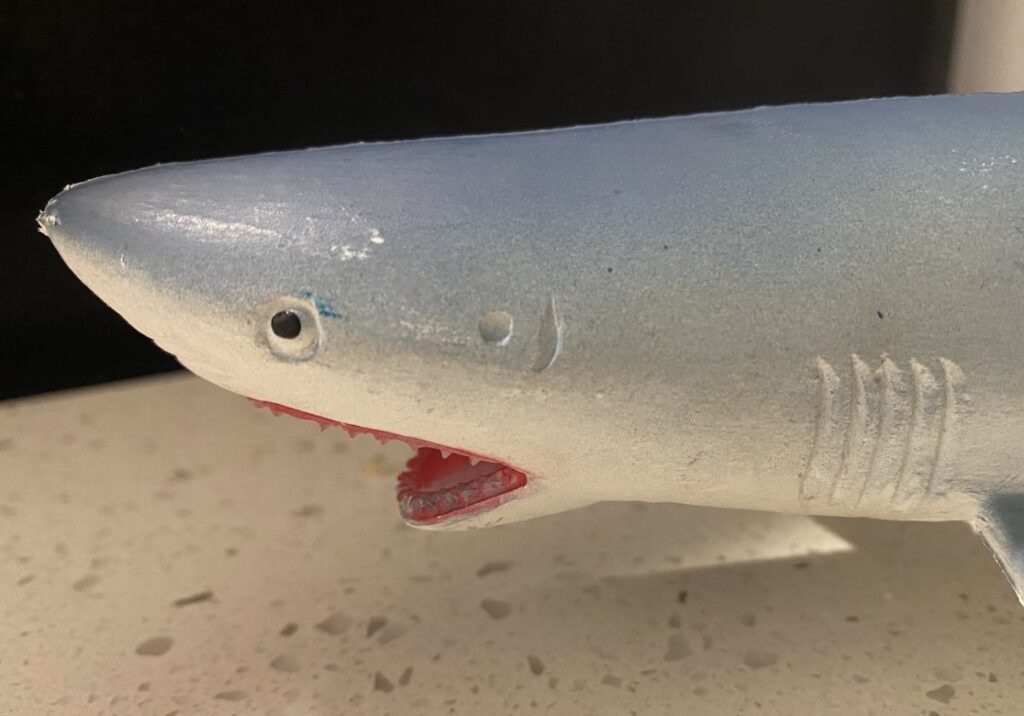
It is overall a very good sculpt of a Greenland Shark, but it is held back in some areas, especially the head. It is as if the sculptors looked at reference images for the Greenland Shark while making the body and lost those when doing the head, slapping on a “basic” shark head. The head here does not read sleeper shark, primarily because it has been given a massive snarling mouth of teeth akin to a requiem or mackerel shark. Greenland sharks have relatively small mouths that do not extend as far down the snout as this model suggests. The light-blue gradient to the figure is also an interesting choice- Greenland Sharks are usually a mottled dark brown or gray, a fact Larami itself points out in the included fact sheet on the shark. On the fact sheet, a brown Greenland Shark is depicted, and the information provided calls the animal a “dark brown to gray black” in appearance. My best guess for the cool blue color scheme is that it was based off underwater images of the shark, where light filtering in from ice above can cast the animal in a pale blue light.

The Larami Greenland Shark is not as detailed or accurate as it could be, but it is still a very good depiction of a Greenland Shark in a market devoid of other options (the only other Greenland Shark model I know is the Neko Works kit which is impossible to track down. If you would like to add a representation of this incredible shark to your collection, I would definitely recommend this figure!
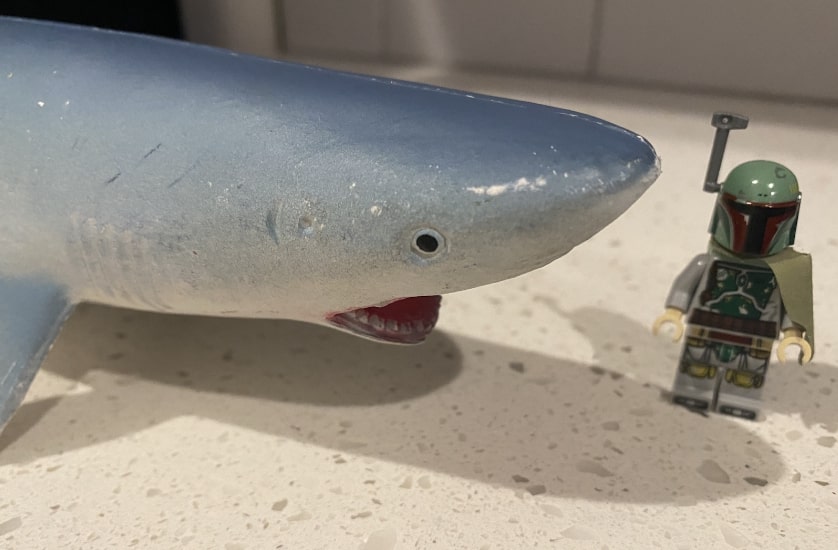
Disclaimer: links to Ebay and Amazon on the AnimalToyBlog are affiliate links, so we make a small commission if you use them. Thanks for supporting us!




There was a time when I had all the Larami sharks but sold them decades ago. Didn’t even remember the Greenland shark.
Highly recommend seeking out the Neko Works model. Smaller but much nicer.
Excellent first review! I really want a Greenland shark but it seems inevitable that Safari, CollectA, or someone else will release a figure a bit more “refined” than this. I can wait.
That’s my thought, too. As I was preparing this post I contemplating searching for this figure, but given the number of shark figures released in recent years, it’s almost inevitable one of the ‘big’ companies will make one sooner or later.
I learned a lot about this species in this review and was was fascinated by both the relationship with the copepod and their longevity!
I’m glad the review was enjoyed, thanks guys! The inevitability of a Greenland Shark by one of the modern figure companies is what is putting me off getting the Neko Works one; definitely nicer but I know only one seller who has it and its very expensive. The Larami will do for now! I was able to get basically the entire set for very cheap, including the sandbar and blacktip sharks, which I believe are the only models made of either. Not up to snuff quality wise, but I’m on a mission to collect every species so they’ll have to do for now! 😉
Although I have no interest in the Greenland shark I have found myself tempted by the sandbar shark. I just don’t see another company making one of those. But I suppose with Safari making a silky shark I shouldn’t give up on getting a sandbar someday too.